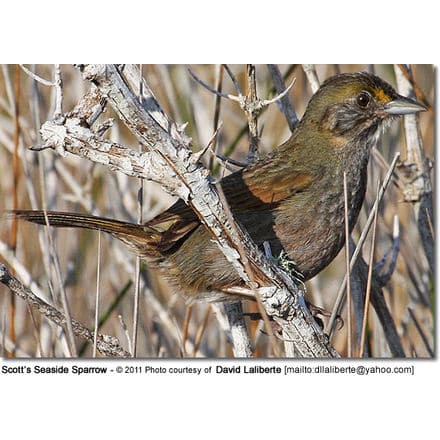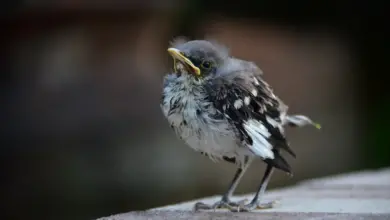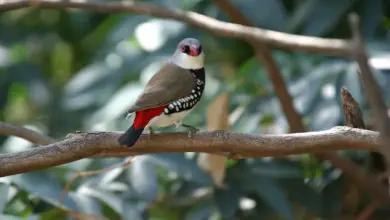Blue-headed Sapphire Hummingbirds
The Blue-headed Sapphire Hummingbirds (Hylocharis grayi) – also sometimes referred to as Gray’s or Puritan Sapphires – are found in the South American countries of Colombia and Ecuador.
This species has previously been lumped together with the similar Humboldt’s Sapphire (Hylocharis humboldtii) found in extreme southeastern Panama in Central America ranging south into northwestern Ecuador. However, these two races have now been separated based on differences in habit, elevation, coloration (especially males), and size. The Blue-headed Sapphires more commonly reside at higher elevations than the Humboldt’s Sapphires, and males also have more extensive blue markings on the upper throat and head, and females are whiter below than the female Humboldt’s Sapphire counterpart.
Distribution / Habitat
Their range stretches from western Colombia south into northern Ecuador. They inhabit subtropical or tropical moist lowland or mangrove forests near the coast, in the scrubby areas of dry valleys, and in cultivated areas.
Description
Males are mostly brilliant green, except for bluish markings on the head and throat. They have dense, white feathers around the legs, which resemble “white cotton balls” above the legs. Both males and females have this distinctive leg plumage, which is, however, not always visible.
Females are whitish below and glossy green above.
Hummingbird Resources
- Hummingbird Information
- Hummingbird Amazing Facts
- Attracting Hummingbirds to Your Garden
- Hummingbird Species
- Feeding Hummingbirds
Diet / Feeding
Blue-headed Sapphires mostly feed on nectar and insects. They hawk (pursue and catch) insects in mid-air or glean them off the foliage.
Nectar is gathered from a variety of brightly colored, scented small flowers of trees, herbs, shrubs, and epiphytes. They favor flowers with the highest sugar content (often red-colored and tubular-shaped) and seek out, and aggressively protect, those areas containing flowers with high-energy nectar. They use their long, extendible, straw-like tongues to retrieve the nectar while hovering with their tails cocked upward as they are licking at the nectar up to 13 times per second. Sometimes they may be seen hanging on the flower while feeding.
Many native and cultivated plants on whose flowers these birds feed heavily rely on them for pollination. The mostly tubular-shaped flowers exclude most bees and butterflies from feeding on them and, subsequently, from pollinating the plants.
They may also visit local hummingbird feeders for some sugar water, or drink out of bird baths or water fountains where they will either hover and sip water as it runs over the edge; or they will perch on the edge and drink – like all the other birds; however, they only remain still for a short moment.
Males establish feeding territories, where they aggressively chase away other males as well as large insects – such as bumblebees and hawk moths – that want to feed in their territory. They use aerial flights and intimidating displays to defend their territories.
Breeding / Nesting
Hummingbirds are solitary in all aspects of life other than breeding, and the male’s only involvement in the reproductive process is the actual mating with the female. They neither live nor migrate in flocks, and there is no pair bond for this species. Males court females by flying in a U-shaped pattern in front of them. He will separate from the female immediately after copulation. One male may mate with several females. In all likelihood, the female will also mate with several males. The males do not participate in choosing the nest location, building the nest, or raising the chicks.
The female is responsible for building the deep cup-shaped nest out of plant fibers woven together and green moss on the outside for camouflage in a protected location in a shrub, bush, or tree. She lines the nest with soft plant fibers, animal hair, and feather down, and strengthens the structure with spider webbing and other sticky material, giving it an elastic quality to allow it to stretch to double its size as the chicks grow and need more room. The nest is typically found on a low, thin horizontal branch.
The average clutch consists of two white eggs, which she incubates alone for about 16 days, while the male defends his territory and the flowers he feeds on. The young are born blind, immobile, and without any down.
The female alone protects and feeds the chicks with regurgitated food (mostly partially digested insects since nectar is an insufficient source of protein for the growing chicks). The female pushes the food down the chicks’ throats with her long bill directly into their stomachs.
As is the case with other hummingbird species, the chicks are brooded only the first week or two and left alone even on cooler nights after about 12 days – probably due to the small nest size. The chicks leave the nest when they are about 18 – 19 days old.
Calls / Vocalizations / Sound Recording
https://www.xeno-canto.org/embed.php?XC=19481&simple=1
Alternate (Global) Names
Chinese: ?????? … Czech: Kolibrík modrohlavý, kolib?ík modrohlavý … Danish: Blåhovedet Safir, Chrysuronia oenone … Dutch: Blauwkopsaffierkolibrie … Finnish: Mangrovesafiirikolibri … French: Saphir ulysse … German: Blaukopf-Saphir, Blaukopf-Saphirkolibri … Italian: Colibrì zaffiro testablu … Japanese: zuaosafaiahachidori … Norwegian: Blåhettekolibri … Polish: szafirek niebieskoglowy, szafirek niebieskog?owy … Russian: ??????????? ?????? … Slovak: kolibrík modrohlavý … Spanish: Zafiro Cabeciazul, Zafiro de Cola Azul … Swedish: Blåhuvad safir




